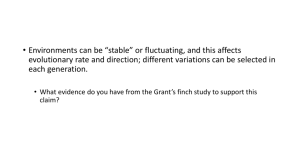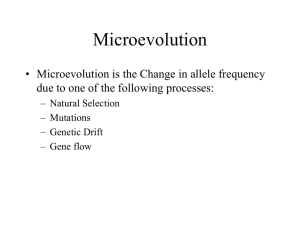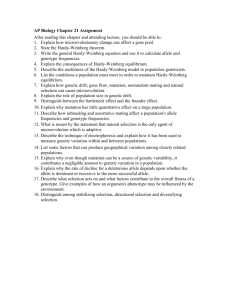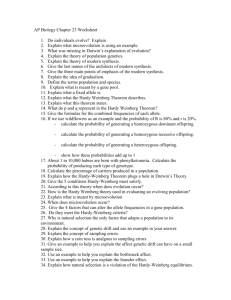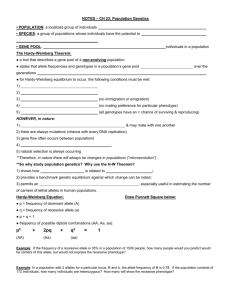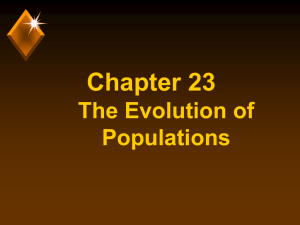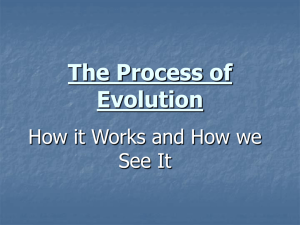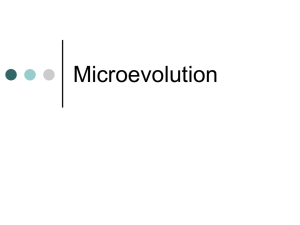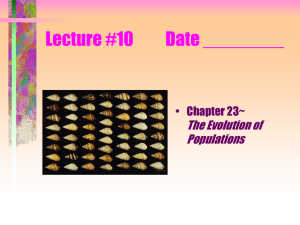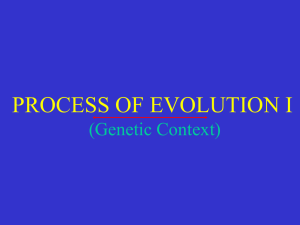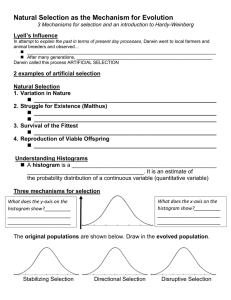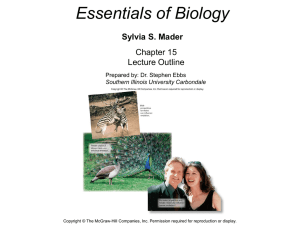Population Genetics
advertisement
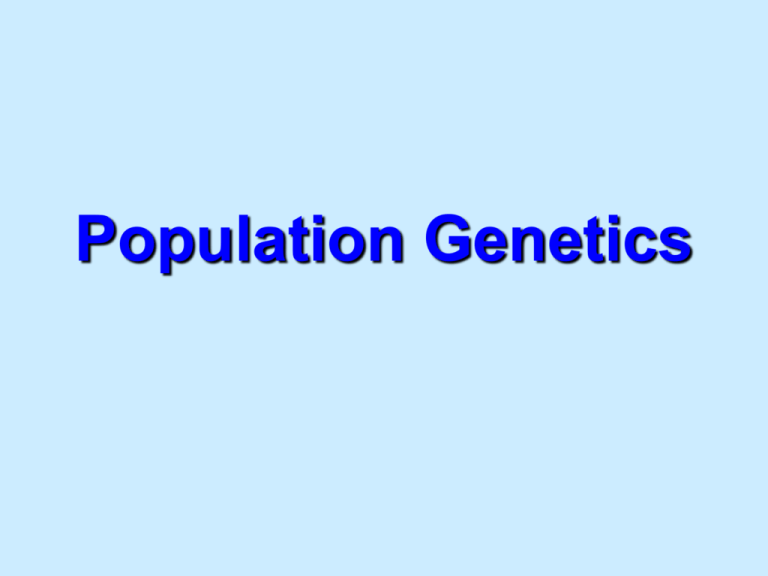
Population Genetics Population Genetics • The science of genetic change in population. • Remember: Hardy-Weinberg equation. – p² + 2pq + q² = 1 – p = frequency of dominant allele – q = frequency of recessive allele – Example: • http://anthro.palomar.edu/synthetic/sample.htm Population • A localized group of individuals belonging to the same species. Species • A group of populations whose individuals have the potential to interbreed and produce viable offspring. Gene Pool • The total collection of genes in a population at any one time. Hardy-Weinberg Principle • The concept that the shuffling of genes that occurs during sexual reproduction, by itself, cannot change the overall genetic makeup of a population. Hardy-Weinberg Principle • This principle will be maintained in nature only if all five of the following conditions are met: 1. 2. 3. 4. 5. Very large population Isolation from other populations No net mutations Random mating No natural selection Hardy-Weinberg Principle • Remember: If these conditions are met, the population is at equilibrium. • This means “No Change” or “No Evolution”. Macroevolution • The origin of taxonomic groups higher than the species level. Microevolution • A change in a population’s gene pool over a secession of generations. • Evolutionary changes in species over relatively brief periods of geological time. Five Mechanisms of Microevolution 1. Genetic drift: Change in the gene pool of a small population due to chance. • Two examples: a. Bottleneck effect b. Founder effect a. Bottleneck Effect • Genetic drift (reduction of alleles in a population) resulting from a disaster that drastically reduces population size. • Examples: 1. Earthquakes 2. Volcanic eruptions b. Founder Effect • Genetic drift resulting from the colonization of a new location by a small number of individuals. • Results in random change of the gene pool. • Example: 1. Islands (first Darwin’s finch) • Simple illustration of founder effect. The original population is on the left with three possible founder populations on the right. Five Mechanisms of Microevolution 2. Gene Flow: The gain or loss of alleles from a population by the movement of individuals or gametes. • Immigration or emigration. Five Mechanisms of Microevolution 3. Mutation: Change in an organism’s DNA that creates a new allele. 4. Non-random mating: The selection of mates other than by chance. 5. Natural selection: Differential reproduction. Modes of Action • Natural selection has three modes of action: 1. Stabilizing selection 2. Directional selection 3. Diversifying selection Number of Individuals Small Large Size of individuals 1. Stabilizing Selection • Acts upon extremes and favors the intermediate. Number of Individuals Small Large Size of individuals 2. Directional Selection • Favors variants of one extreme. Number of Individuals Small Large Size of individuals 3. Diversifying Selection • Favors variants of opposite extremes. Number of Individuals Small Large Size of individuals Speciation • The evolution of new species. Reproductive Barriers • Any mechanism that impedes two species from producing fertile and/or viable hybrid offspring. • Two barriers: 1. Pre-zygotic barriers 2. Post-zygotic barriers This powerpoint was kindly donated to www.worldofteaching.com http://www.worldofteaching.com is home to over a thousand powerpoints submitted by teachers. This is a completely free site and requires no registration. Please visit and I hope it will help in your teaching. Artificial Selection • The selective breeding of domesticated plants and animals by man. • Question: What’s the ancestor of the domesticated dog? • Answer: WOLF Evidence of Evolution 1. Biogeography: Geographical distribution of species. 2. Fossil Record: Fossils and the order in which they appear in layers of sedimentary rock (strongest evidence). Evidence of Evolution 3. Taxonomy: Classification of life forms. 4. Homologous structures: Structures that are similar because of common ancestry (comparative anatomy) Evidence of Evolution 5. Comparative embryology: Study of structures that appear during embryonic development. 6. Molecular biology: DNA and proteins (amino acids)




